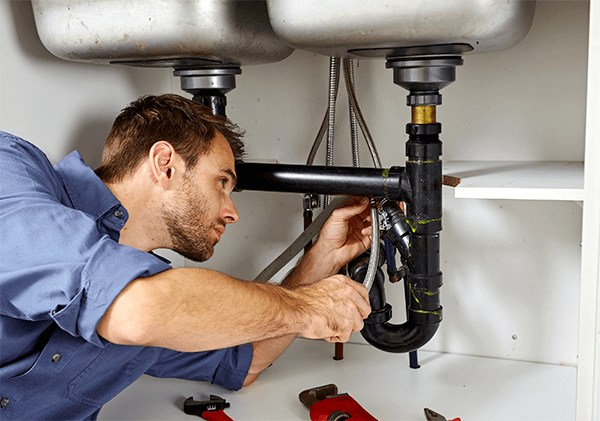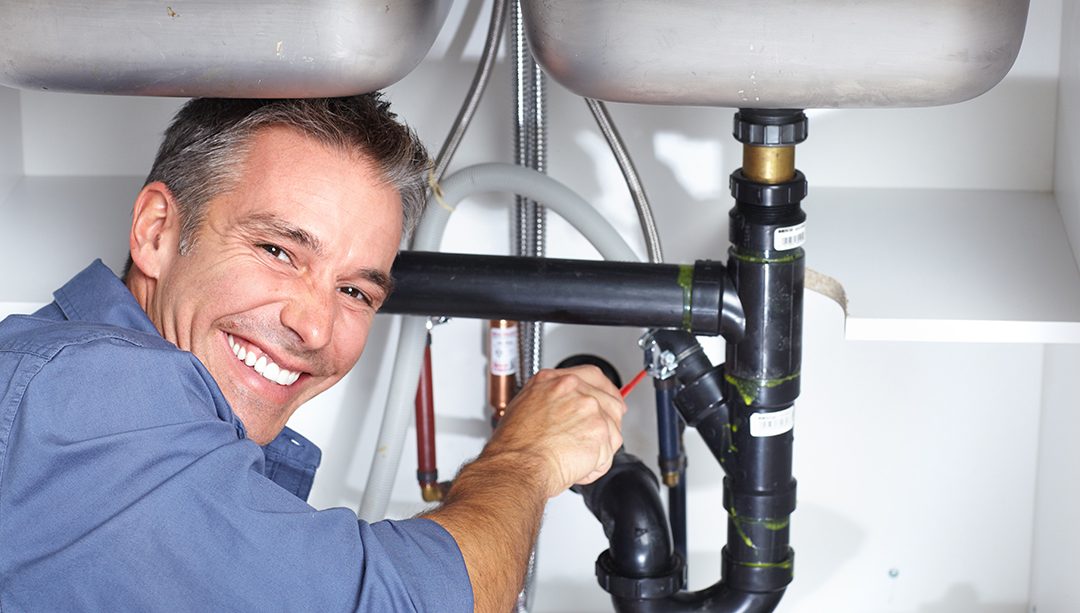Were you trying to find suggestions about Common Plumbing Challenges In Old Buildings?

Older homes often feature appeal, character, and background, however they can also bring a host of plumbing issues. Whether you're handling maturing pipelines, low water stress, or leakages, recognizing exactly how to deal with these common troubles is important to maintaining a secure and functional home. In this overview, we'll explore the typical pipes challenges encountered by older homes and offer sensible services to maintain your plumbing in leading shape.
Recognizing Typical Plumbing Concerns
Aging Pipes
Among one of the most typical concerns in older homes is maturing pipelines. Relying on the period in which your home was constructed, the pipelines may be made from materials that have actually deteriorated over time, such as galvanized steel, cast iron, and even lead. These materials can wear away, become weak, or create leakages, bring about water damages and possible carcinogen.
Low Water Pressure
If you're experiencing low water stress, maybe due to mineral deposits, rust inside the pipes, or old fixtures that are no longer operating successfully. This can be a significant aggravation, particularly in areas like showers and sinks.
Leaking Pipes
Leakages are an additional constant concern in older homes, frequently brought on by corroded or worn-out pipelines. Also tiny leakages can lead to substantial water damage, mold and mildew development, and boosted water costs otherwise addressed quickly.
Out-of-date Fixtures
Obsolete pipes components such as faucets, bathrooms, and showerheads not only look old but may likewise be much less reliable, vulnerable to leakages, or inappropriate with modern plumbing requirements.
Pipeline Deterioration
Corrosion is a common issue in older pipelines, specifically those made from galvanized steel or actors iron. Corroded pipes can limit water flow, cause discoloration, and ultimately cause leakages or pipeline ruptureds.
Assessing the Condition of Your Pipes
Examining Noticeable Pipelines
Begin by checking any noticeable pipelines in your house, such as those in basements, crawl spaces, or under sinks. Try to find indicators of corrosion, leaks, or rust, which can indicate underlying issues.
Checking for Leaks
Look for leakages by examining locations around taps, toilets, and under sinks. You can additionally monitor your water meter before and after a duration of no water utilize to find concealed leaks.
Water Top Quality Testing
Older pipelines can impact the quality of your water. Conduct a water high quality examination to check for pollutants such as lead, corrosion, or other pollutants that may be presented by aging pipelines.
Solutions for Typical Plumbing Concerns
Changing Aging Pipelines
If your home has old, wearing away pipes, think about replacing them with modern materials like copper or PEX. This can be a considerable financial investment, yet it will stop future issues and enhance the safety and reliability of your plumbing system.
Fixing Low Tide Pressure
To deal with low tide pressure, begin by cleaning or changing old fixtures and removing mineral accumulation in the pipelines. If the trouble persists, it may be required to replace sections of corroded pipelines.
Fixing and Replacing Leaking Pipes
For tiny leaks, you can utilize pipe clamps or epoxy putty as a temporary repair. Nevertheless, it's best to change leaking pipes totally to stay clear of additional damages.
Upgrading Fixtures
Upgrading old fixtures to modern, water-efficient models can improve your home's plumbing performance and reduce water usage. Look for components with the WaterSense label for the very best effectiveness.
Dealing with Pipeline Rust
If your pipes are rusted, replacing them with corrosion-resistant products like copper, PVC, or PEX is the very best solution. Routine examinations and water quality upkeep can aid protect against better corrosion.
When to Call a Specialist
While some pipes problems can be managed with do it yourself remedies, there are times when it's best to employ a specialist. If you're dealing with significant leakages, substantial deterioration, or are not sure concerning the problem of your pipes, a certified plumbing professional can provide experienced assessment and repair service.
Preventive Maintenance Tips
Routine Inspections
On a regular basis inspect your plumbing system for signs of damage. Catching issues early can protect against pricey repairs down the line.
Water Stress Regulation
Guarantee your water stress is within the suggested range to avoid emphasizing your pipelines and fixtures. A plumber can mount a stress regulatory authority if needed.
Water Top Quality Upkeep
Install water filters or softeners if your water quality is poor. This can protect your pipelines and components from damages brought on by difficult water or contaminants.
Proactive Pipe Replacement
If your home has older pipelines, consider positive substitute before major problems arise. This can conserve you from emergency situation repair services and water damages.
Final thought
Taking care of plumbing issues in older homes requires a mix of vigilance, precautionary maintenance, and timely upgrades. By understanding the usual obstacles and understanding when to seek expert assistance, you can ensure your plumbing system stays functional and reputable for many years ahead.
Top Common Plumbing Problems In Old Houses And How To Solve Them
Older houses are often cherished for their charm and character. Many that remain standing were built to unique specifications and constructed with materials that are prohibitively expensive in modern construction. For many young people looking to buy their first home, an old house that needs a little extra care is often an attractive option.
However, these houses often conceal a number of problems behind their fancy crown molding and plaster walls. While some of these issues are relatively minor inconveniences, others are ticking time bombs that could cause significant damage. Potential homeowners would be wise to keep in mind a few specific plumbing features that are unfortunately quite common in homes more than a few decades old. Here are some of the most common plumbing problems found in old houses and how to solve them.
Old Homes & Plumbing Problems
While old homes have some kind of charm that new structures seem to lack, they also come with their host of plumbing problems. Even though an older home may be completely redone on the outside and be the curb appeal of the neighborhood, the skeleton of the house may still be decades old (if not more than a hundred years old!).
Even if the attractive details of old homes, such as crown moldings and hardwood floors, may appeal to you, old plumbing can be especially problematic. The plumbing inside of homes may be as old as the structure itself and can lead to plenty of problems and unanticipated costs, especially if the plumbing wasn t taken care of through the years.
The most efficient way to avoid any catastrophic plumbing problems - and the high costs associated with them - includes understanding the condition of your home s plumbing situation.
Old Pipe Materials
Any home built before the 1990s could potentially feature pipes made from materials that are no longer approved by U.S. building codes. If the home has been renovated within the last few decades, some or all of these pipes were probably replaced, but it s always recommended to have the home s plumbing inspected to ensure there are no unexpected surprises the first time a drain clogs.
Older homes could potentially feature three outdated types of plumbing pipes:
Lead
Most commonly used for sewer lines and water main lines, lead is one of the oldest metals used in piping. Before the development of blast furnaces capable of casting iron, lead was an ideal metal for plumbing because of its malleability and durability. Lead was also used extensively as an additive in the solder used to join copper pipe fittings. Unfortunately, lead is highly toxic, resulting in joint and gastrointestinal pain, irritability, fatigue, and memory loss. It is especially dangerous to children, causing serious problems with physical and mental development. Although the US has restricted the use of lead since the 1920s, it wasn t banned completely at the national level until Congress amended the Safe Drinking Water Act in 1986.
Galvanized
Commonly used for water lines in homes built before the 1960s, galvanized pipe is made of iron and coated with a layer of zinc. Over time, the zinc erodes, leaving the pipe very susceptible to corrosion and breakage. Although they can last as long as 60 years, most of them become clogged with rust long before then. Aging galvanized pipes become so brittle that they usually have to be broken apart to be removed and replaced. For this reason, they are usually replaced piecemeal in older homes, with the relatively intact pipes left in place.
Polybutylene
Heralded as the pipe of the future when it appeared in the 1970s, polybutylene pipe was introduced as a replacement for copper lines and saw widespread use throughout the 1980s. Unfortunately, the manufacturer was forced to pay out millions of dollars after a class-action lawsuit alleging the pipes were defective. Although the manufacturer never acknowledged a defect, oxidants in public water systems caused a chemical reaction with the plastic, leading it to flake, become brittle, and crack. Polybutylene was mostly used in mobile home installations, but any home constructed in the 1980s and early 1990s may have the plastic pipes somewhere. No longer manufactured or rated by US building codes, any existing polybutylene pipes should be replaced before they fail.
Pipe Bellies
Pipes installed underneath homes, either buried in the ground or encased in the concrete slab, are affected by the gradual movement and shifting of the house over time. If the pipes shift downwards, they can create a negative slope, or belly, that restricts the flow of water and creates pools that accumulate waste or sediment. Left unattended, pipe bellies can cause stoppages or leaks over time.
Depending on the situation, trenchless pipe bursting repair may be the best solution for pipe bellies. However, you will need a professional plumber to go on the scene and check out how severe it is.
Failing Sewer Lines
Buried and out of sight, no one thinks much about their sewer line until it fails, seeping sewage into the ground or backing foul-smelling wastewater up into the home. Sewer lines see heavy use and those in older homes were often built before modern appliances (garbage disposals, dishwashers, etc) and toilets forced more water through them, making them more susceptible to failure, especially if there s been extensive remodeling. Older homes are also more likely to have issues with sewer lines shifting or being damaged by tree roots.
Trenchless sewer line replacement or relining can be the fastest way to fix failed sewer lines. In many cases, trenchless repair is a single-day fix. There s no need for excessive, time-consuming labor to dig up a pipe (or replace damaged landscaping).
https://www.expresssewer.com/blog/plumbing-problems-in-old-houses

I'm certainly very involved in Plumbing Issues in Older Properties and How to Fix Them and I really hope you enjoyed my blog entry. Be sure to take the time to share this write-up if you liked it. Thanks for being here. Please come by our blog back soon.
Schedule A Service Call